I walk down Moonta jetty, the stomping ground of my youth. The sun is coming down clean onto my right side out of a cloudless sky. Around where my shadow falls, it illuminates the depths with rippling green fire.
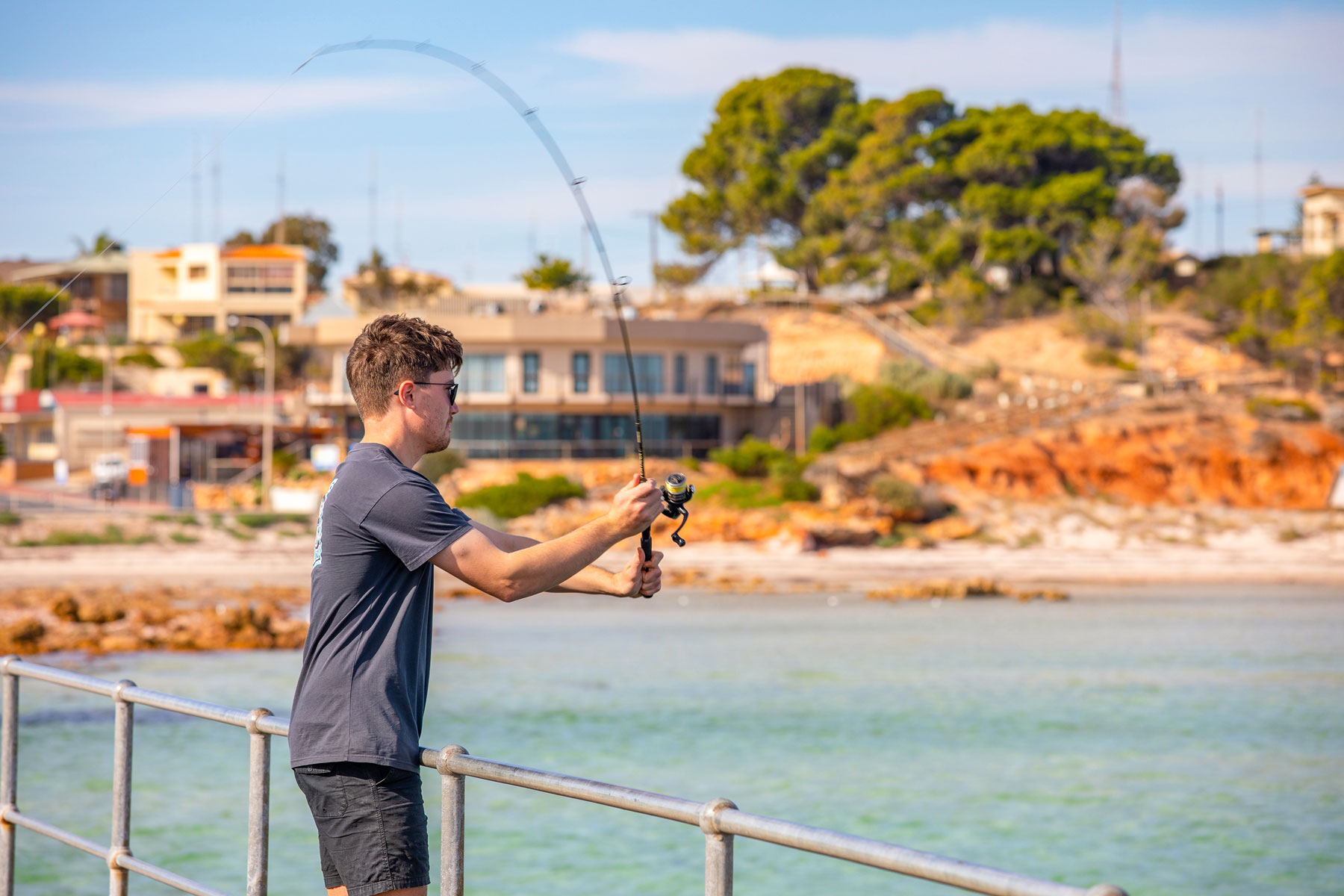
I cast where the sandy seabed meets the dark green of the weed patch. The dilapidated yellow squid jig lands right on the money. Ha. Could it be that I’m still a deadeye after time on the side-lines? Perhaps not. The signs point to low confidence. I’m wearing one of my favourite shirts, a beginner’s move when the squid fishing is on.



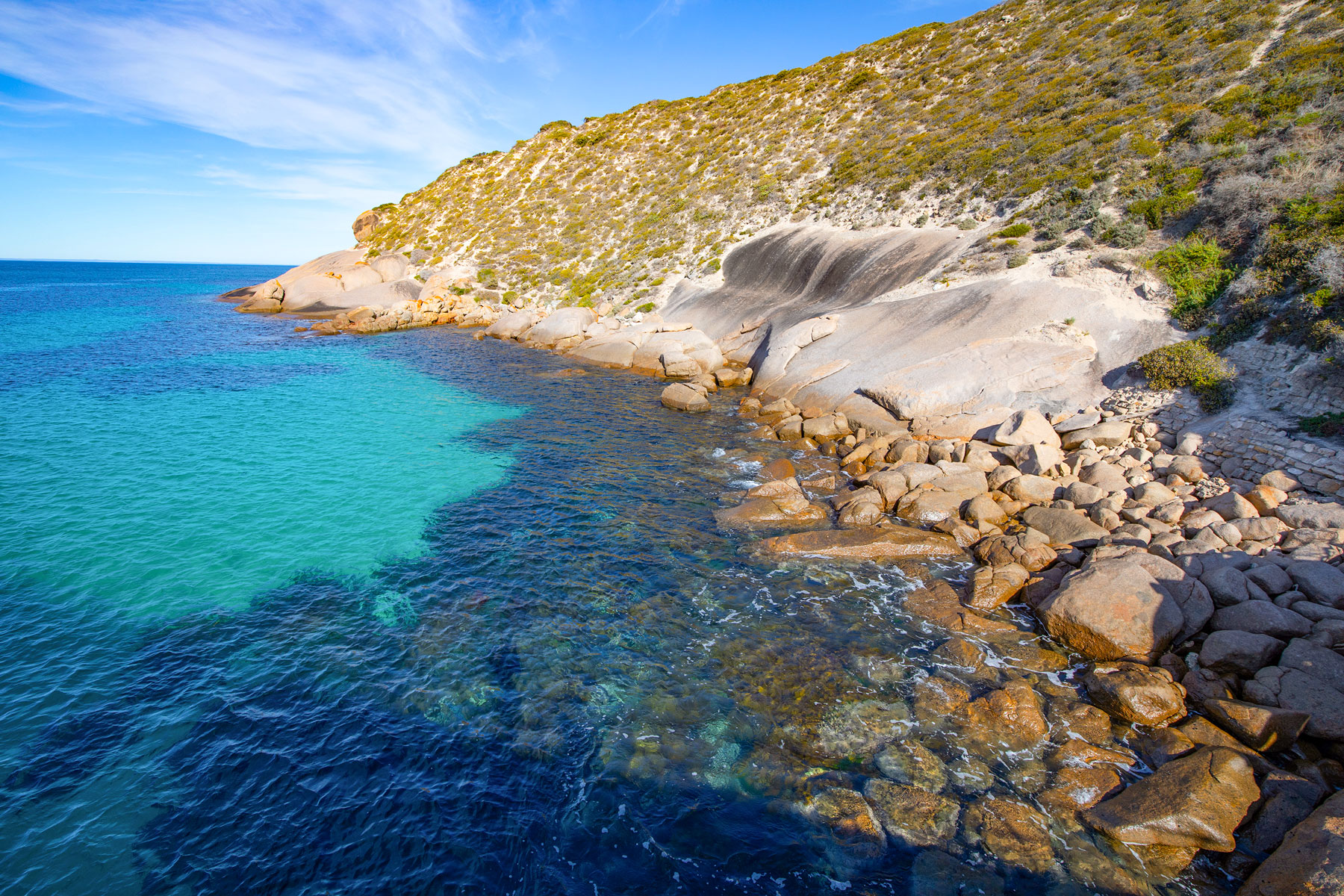
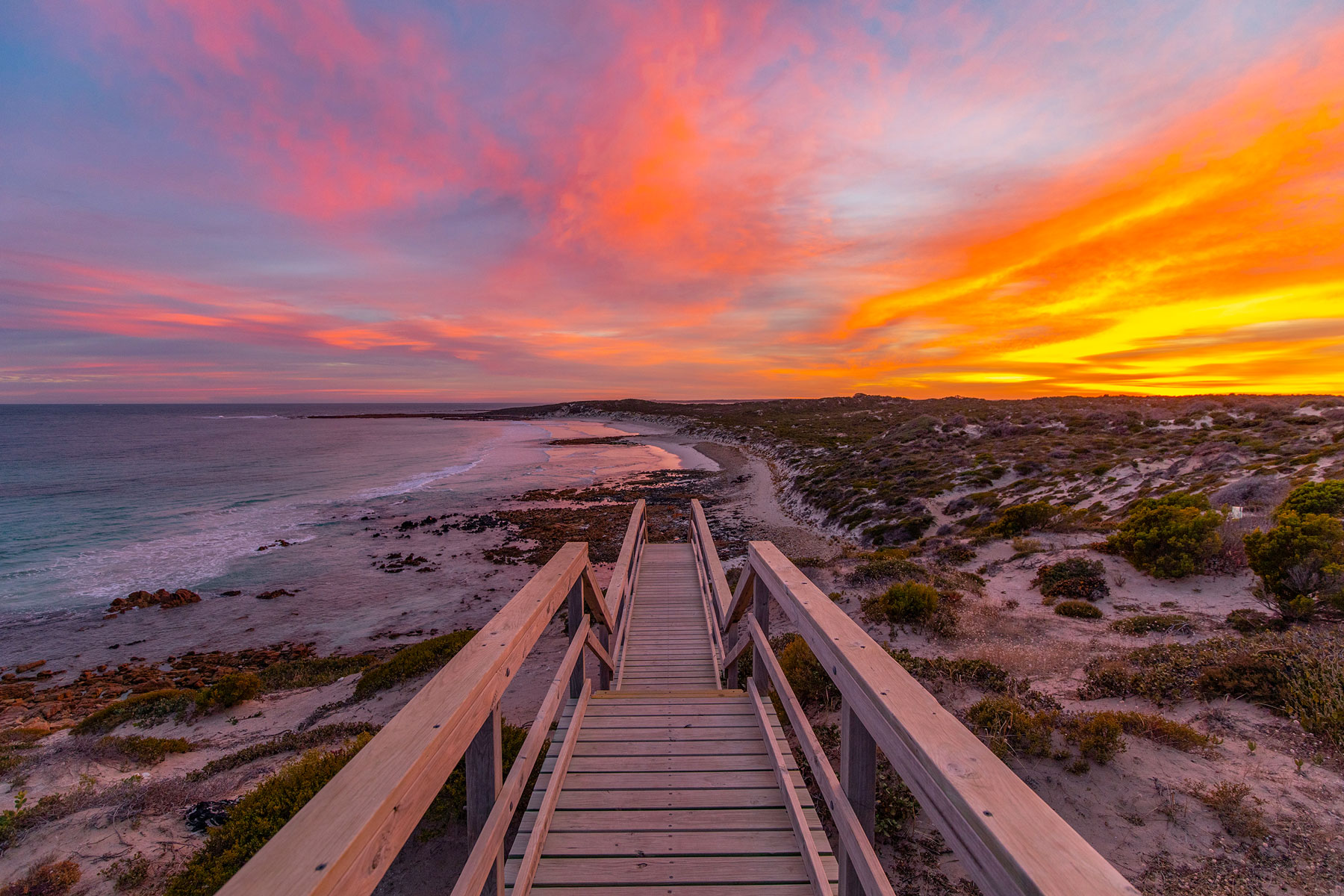
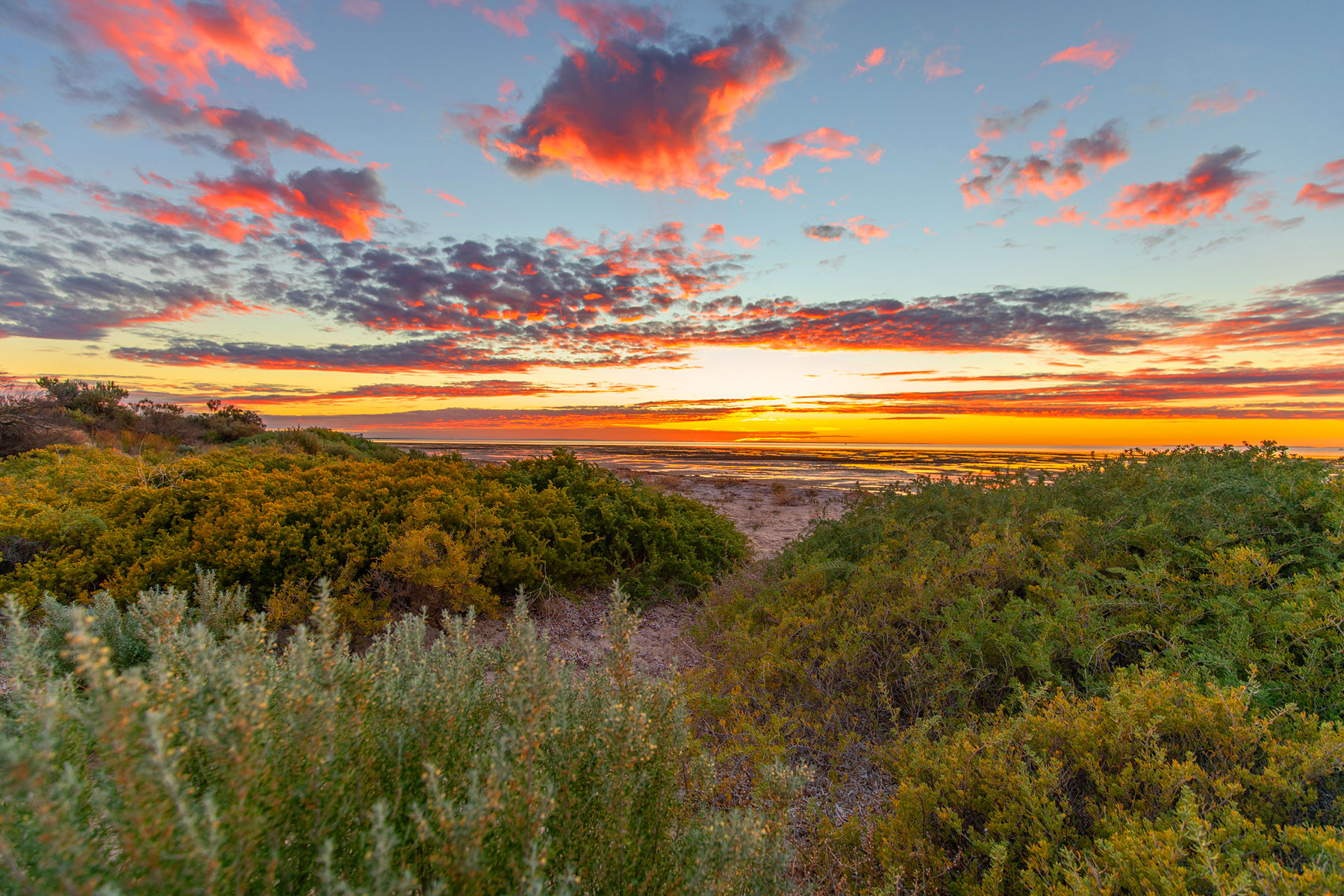
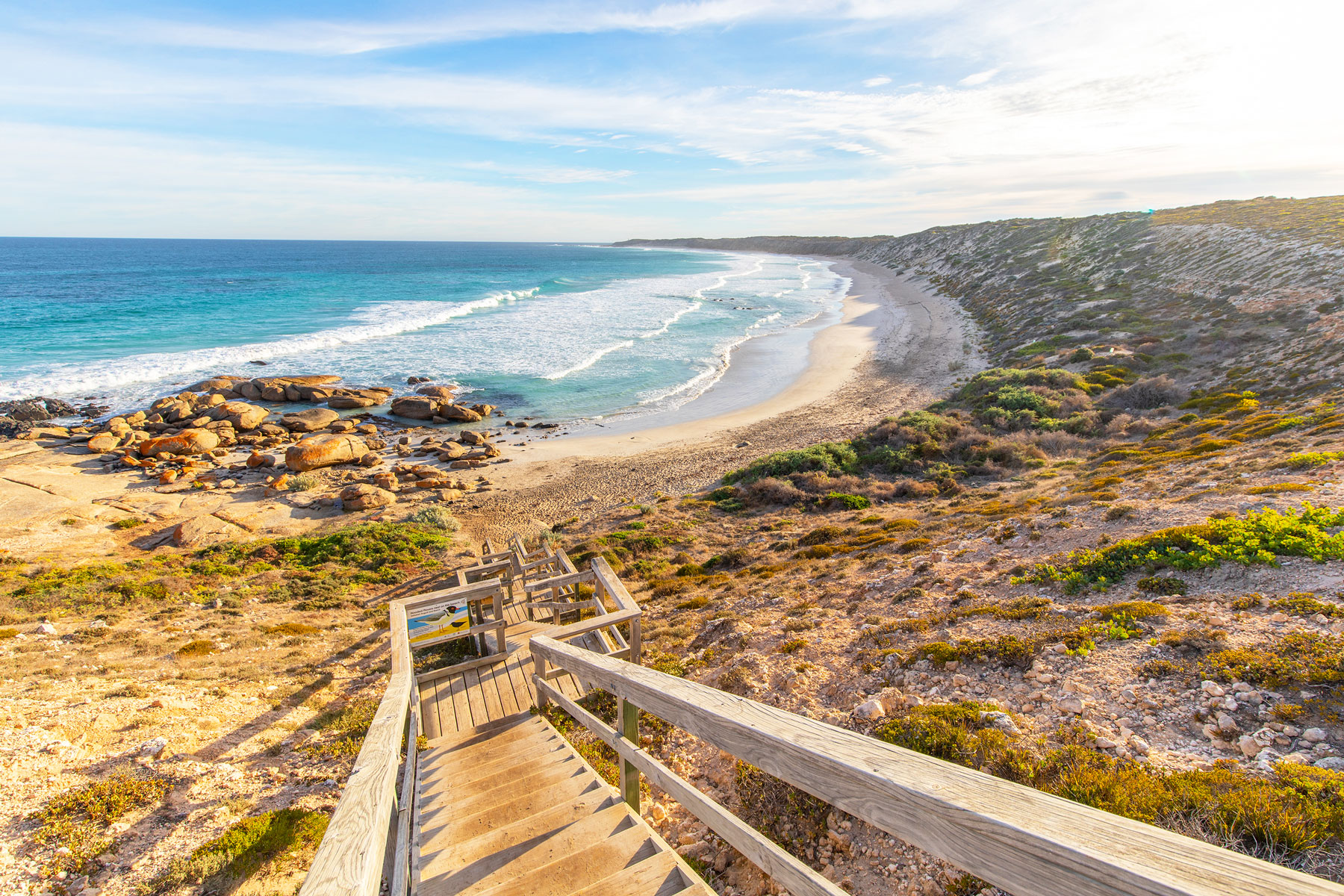
Even so, reeling in with the occasional yank backwards is pleasant in itself – never mind the wind. It flaps my shirt, creeps its cold fingers up to my chest, rushes through the rod’s eyelets and past my ears, singing a mournful tune, often a fisherman’s only company.
My mind wanders, drawn back in time by these familiar sensations. I remember bagging out on tommies by the lampposts at Stansbury jetty on freezing cold nights. Casting bait at a huge black stingray in the shallows on light tackle with fellow devilish adolescents (it graciously ignored our very presence). Pulling up the thin rope of the crab net and feeling the sudden release of tension as the net, crowded with blue swimmer crabs, pulled out of the water like a bath plug.
And how about my first encounter with a bogged car, when a family friend’s LandCruiser dug itself in at Edithburgh? What a fluke that this happened on Yorkes, an onroader’s dream destination. Naturally, we had no shovel nor Maxtrax. I desperately dug with my hands and used all that was available to generate traction. Alas, seaweed isn’t very grippy. The rising tide flooded the 4WD. It ended its life as an insurance claim.
Squid fishing notwithstanding, you can catch big fish on the Yorke Peninsula. I’ve caught bronze whalers here, away from the swimming beaches, using steel trace so they can’t bite through the line. I’ve seen a school of kingfish visit one of the jetties and dart around like underwater missiles, in every direction except towards my hooks. But most of the Yorke has that sedate, bag-out-on-smaller-species feel to it. That mellow, unrushed, lazy summer afternoon atmosphere.
That’s particularly true of the eastern coast, which faces Adelaide across the Spencer Gulf. Here, the beaches consist mostly of tidal flats, alternately revealed and submerged by the moon’s whims. Behind the sand-blown esplanade of any given town stretch rows of colourful holiday shacks, empty in winter except for during school holidays.
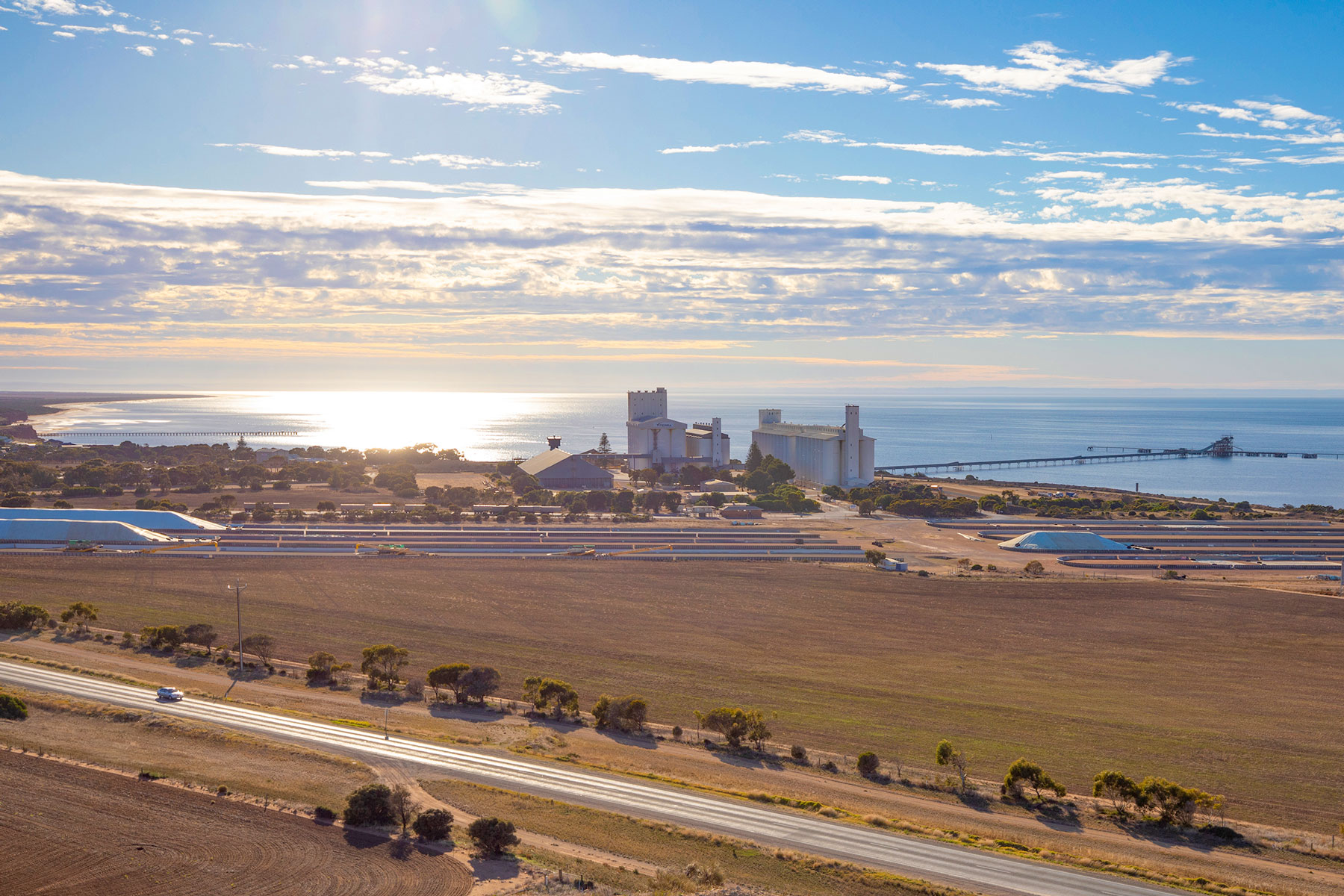
The view from Ardrossan lookout
The shacks on Yorkes would make a ripe field of sociological study. There’s usually a bookshelf with a jar of seashells, a broken-spined pulp fiction collection, and multiple puzzles of quaint English countryside missing 30 pieces; a flipbook with plastic sleeves full of burnt DVDs titled with permanent marker; 10 daddy long-legs in the ceiling corners; a passable strip of grass for backyard cricket; a ping-pong table but no balls and only one racquet; and inspirational quote art on the walls, so bad it’s good.
The peninsula’s western side is cleaner and less weedy. The topography is more dramatic, the ocean more exposed and the swell more dynamic. The inland is mostly grain farmland, golden and wavy at times, charred and shorn nearly bald at others. But there are beautiful painted water towers near Edithburgh, Yorketown and in other places along the Mural Trail. There’s also a ‘Red Devil’ Bristol M1C Monoplane in Minlaton, pink salt lakes near Yorketown, and the Moonta Mines relics, museum, and sweet shop inland from the jetty. The Cornish flag (black with a white cross) still cracks proudly in the offshore breeze, a homage to Cornwall settler heritage.
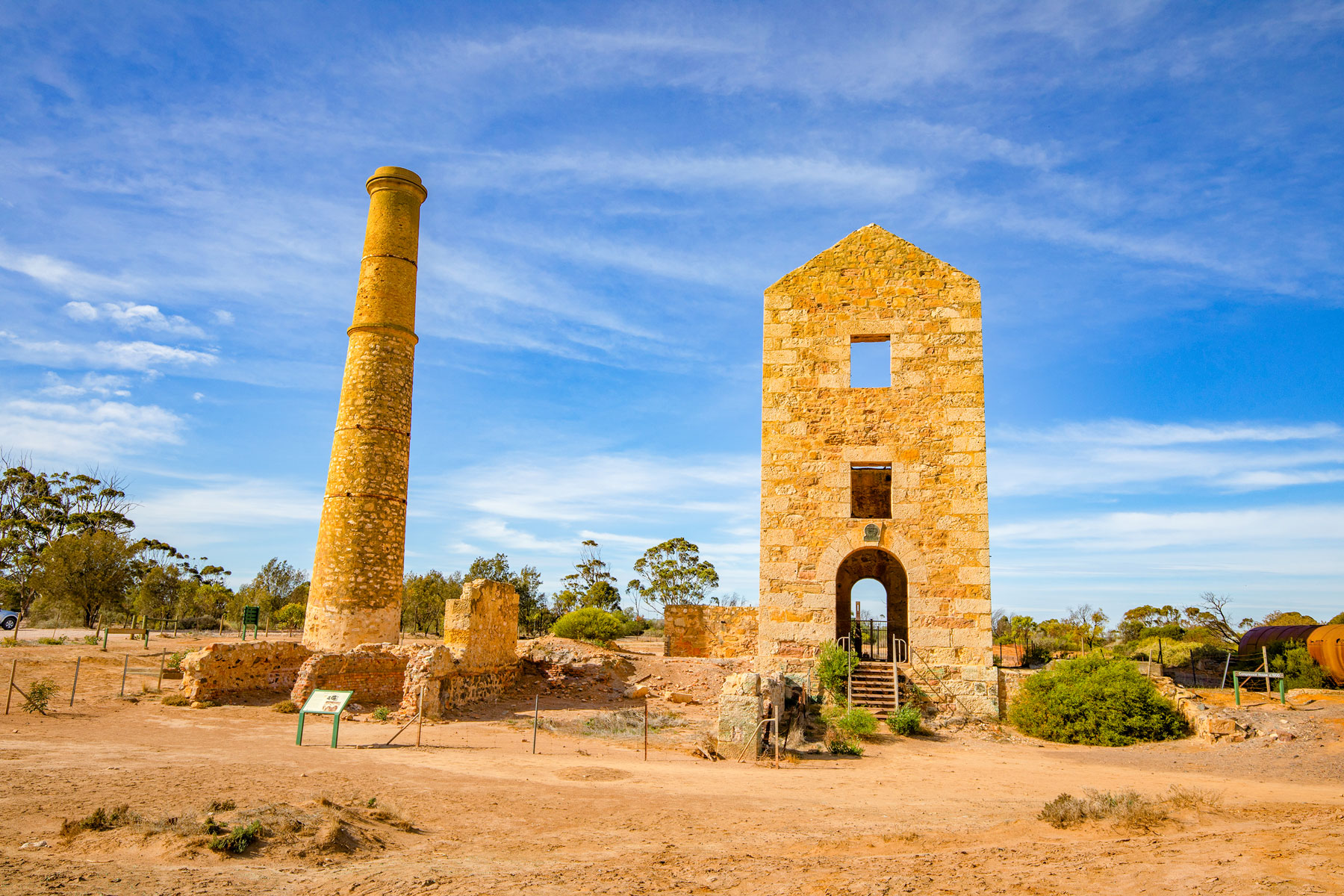
Amazing old ruins at Moonta Mines
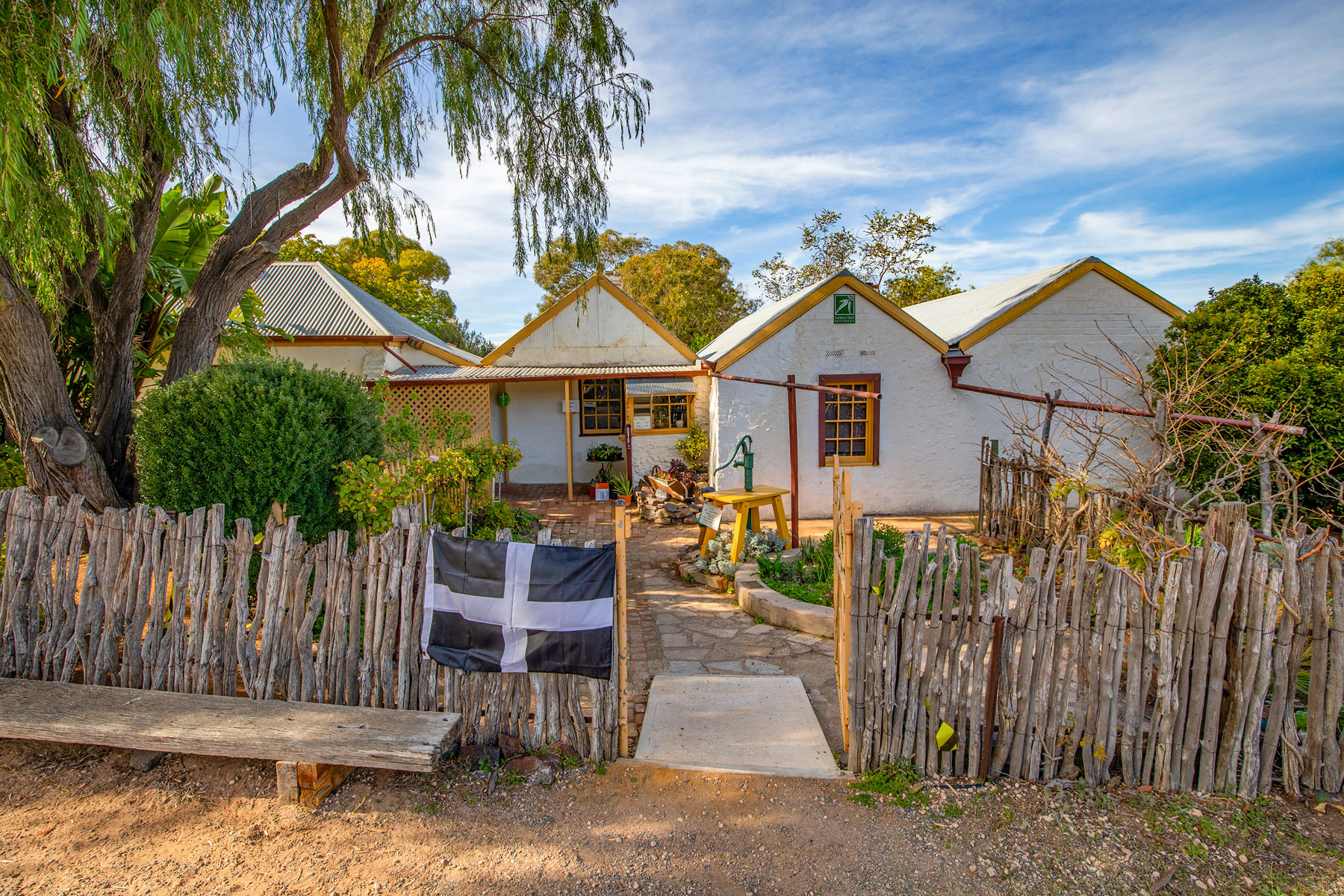
The Cornish Flag at a heritage Moonta building
But this trip, like most trips to the Peninsula, really came into its own at the tip of the boot, Innes National Park. The epic Stenhouse Bay sets the tone early, right as you enter. From a high vantage point atop cliffs, you can look down at the long pier stretching out into glowingly blue waters of the bay formed by a headland of slanting granite. You’ll need to use your imagination to populate the scene with the hustling and bustling of the old gypsum trade. The ruins of a tramway for lowering gypsum from Inneston (a nearby historical town) still cling to the steep cliff-side. Where in the world do cement and plaster of Paris of Inneston pedigree still stand today?
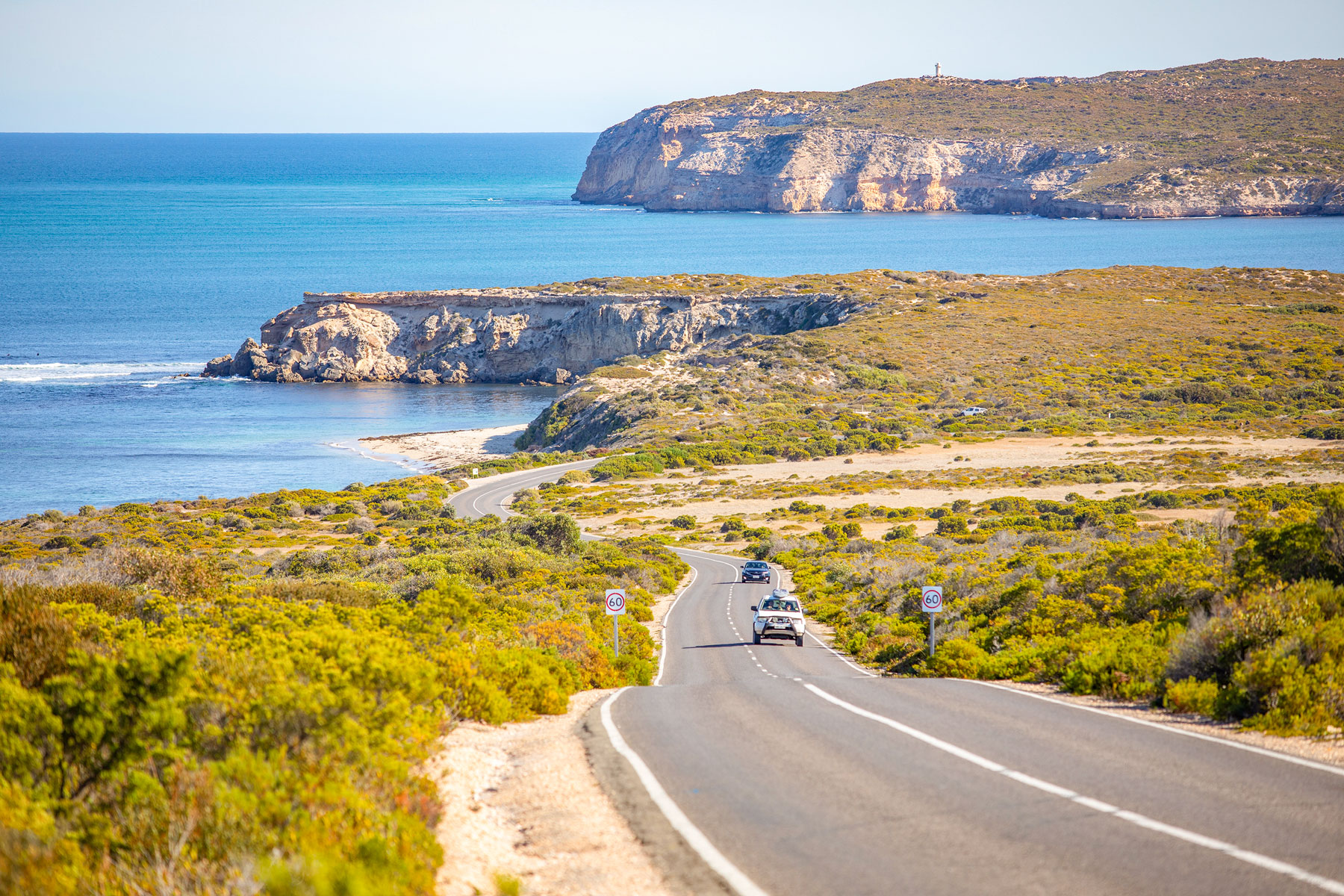
Deeper into the park, emus stroll through coastal shrub on the land-side and Chinaman’s Hat rock formation sits atop the water out to sea. You’ll be hopping in and out of the car, taking in West Cape Beach, Cape Spencer Lighthouse, and – my favourite – Ethel Wreck. Here, the rusty ribs of an 1876-built 711-tonne three-masted iron barque stick out of the sand. Ethel, which had departed from South Africa, scuttled on reef in a storm in 1904, painfully close to Port Adelaide, where a hot cup of tea or something stronger awaited. One man died, though it could have been worse. Either side of the beach the ocean terminates against the base of towering cliffs.
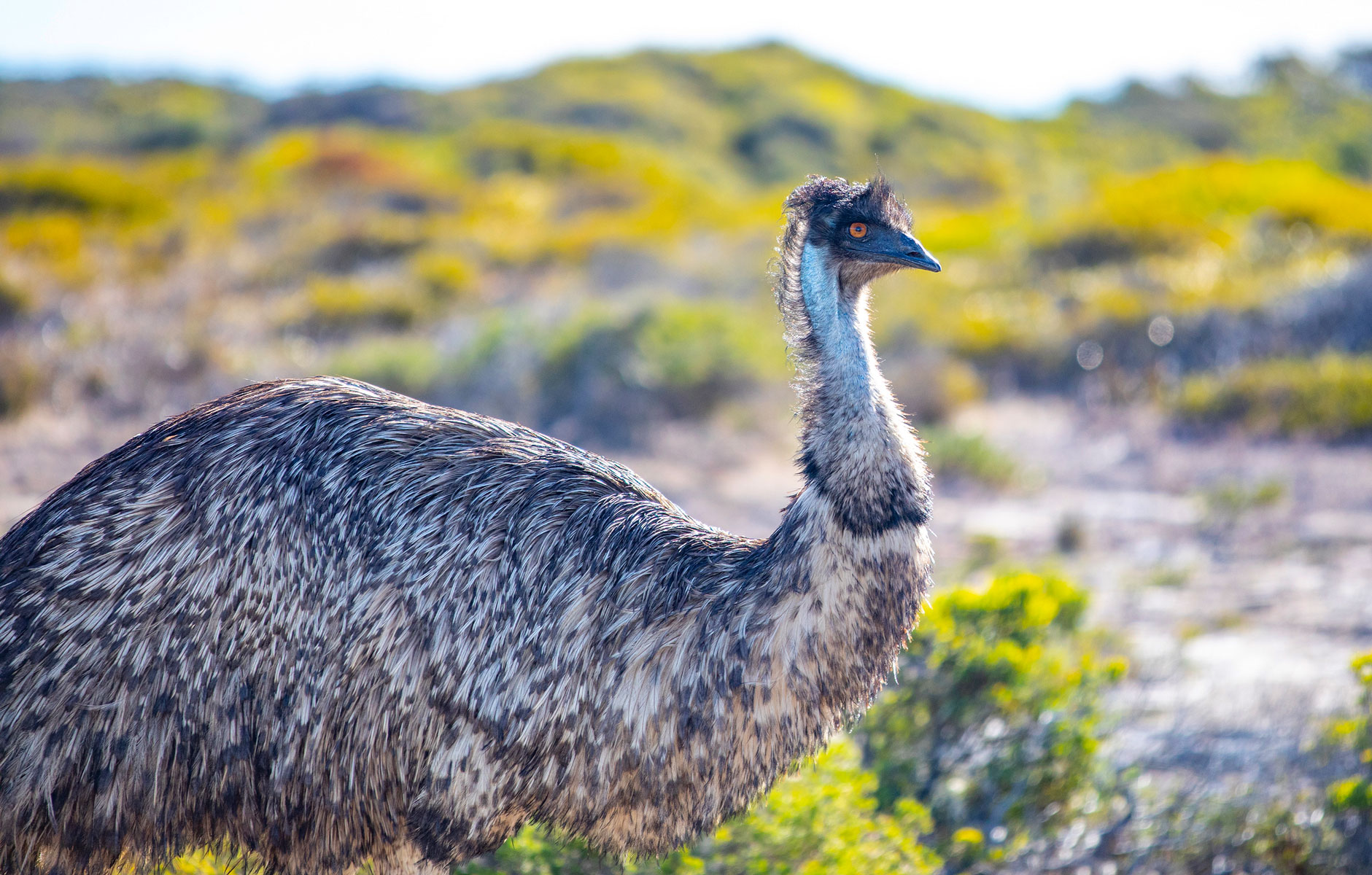

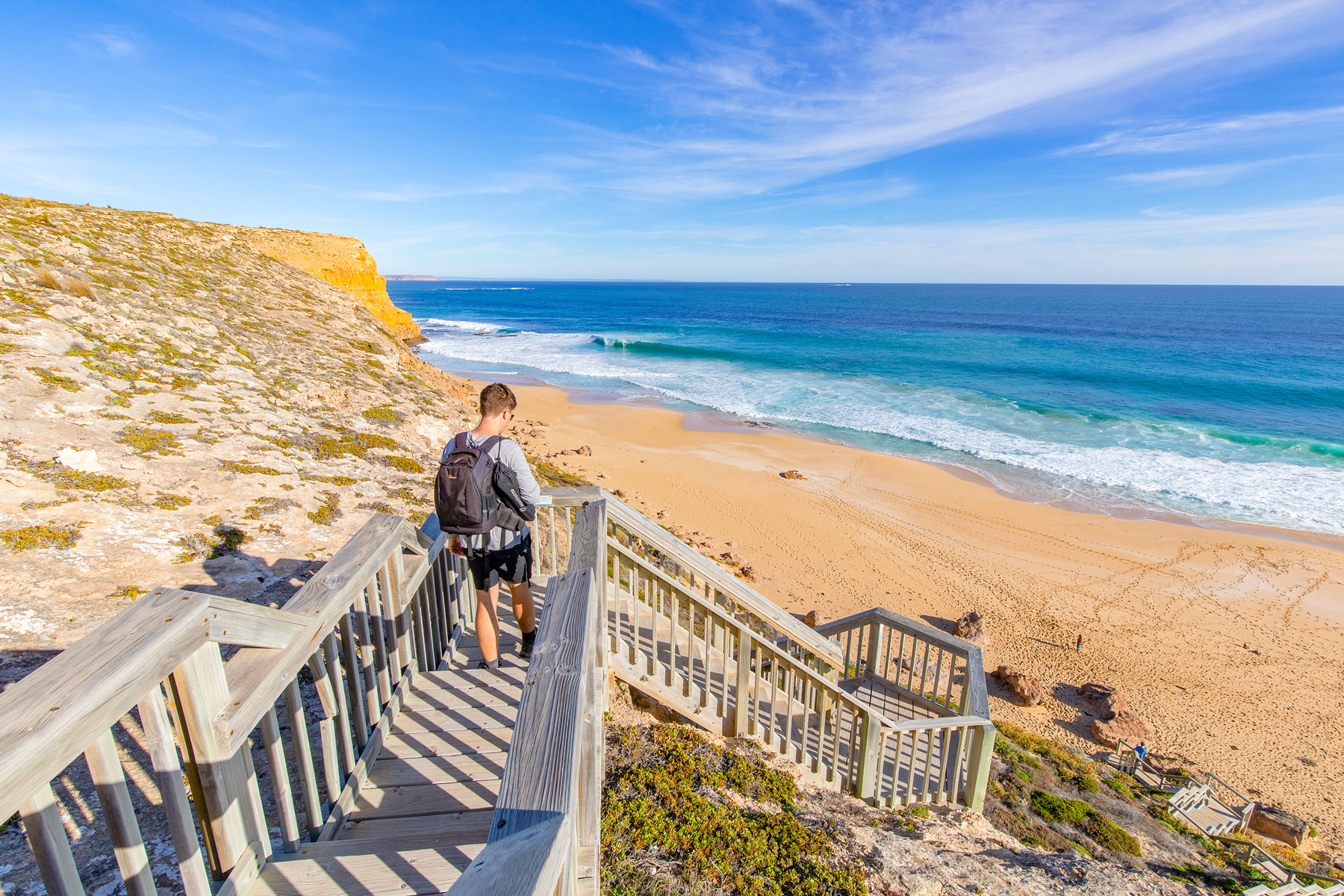
Further along, at Pondalowie Bay, awaits the ritual of watching surfers bob on their boards, hanging out for the famous break. A smattering of islands, headlands and peninsulas forms the backdrop. Each visit, we lean against the wooden rail of the viewing platform, among surfers pulling neoprene from around their ankles and towelling dry their hair. The ocean is momentarily becalmed. The surfers chat among themselves, idle conversation out of earshot. Then walls of water appear on the horizon. The leader swivels, paddles and snaps into standing position. The setting sun illuminates the wave from behind. His board’s carving edge slashes free a jewellery box of glowing droplets that form a fine descending mist around his silhouette.
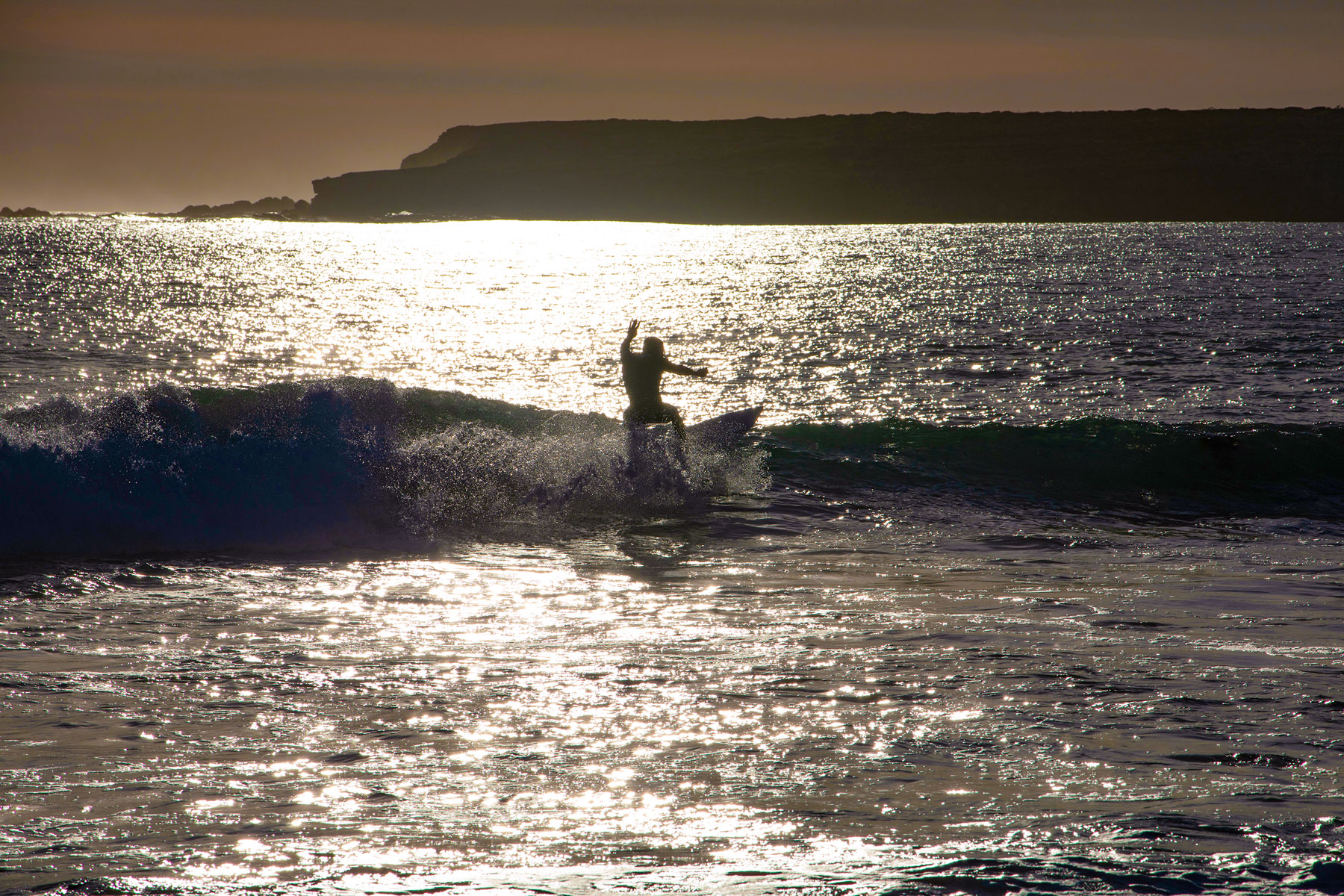
I jump a little as Emma says hello. She’s caught me up from her beach walk and I’m suddenly out of my daydream, back on Moonta jetty flicking around a squid jig. At this rate we’ll be racing the roos home. I promise one last cast. As I’m bringing in, ruefully savouring my brief return to fishing, I recognise the sudden, pulsating weight on the end of the line.
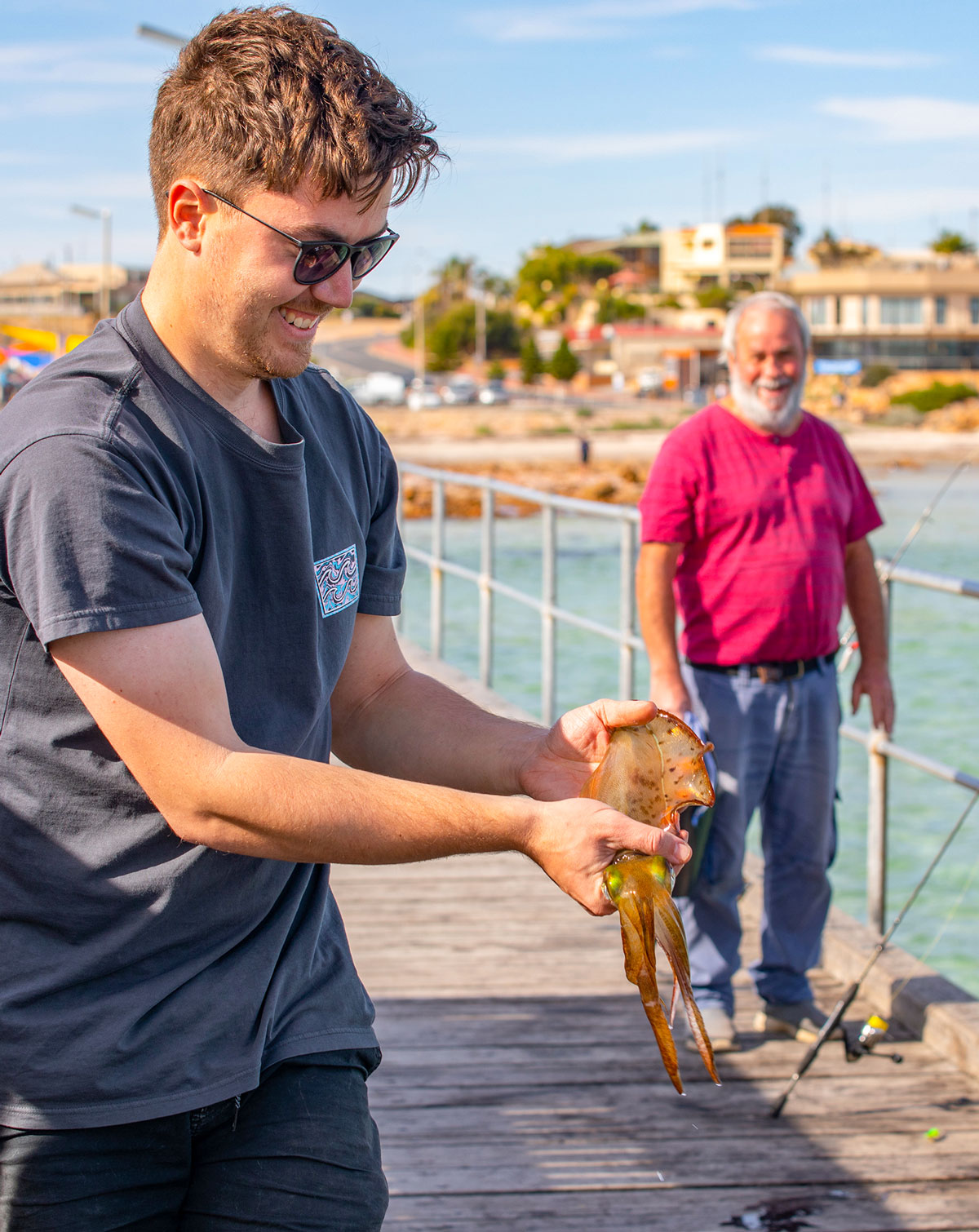
Laughing, I bring the squid in level with the jetty, rest the rod, and pull the line in hand over hand. He’s a bigg’n, though no Kraken. Once he’s safely over the rail and onto the deck, I lever the barbs out his tentacles and pick him up for a quick photo with my arms way as he squirts the jetty with ink stains. Having come unprepared, I plop him into the tackle-filled bucket of a smiling local. Dinner.
You don’t make that mistake twice. I’ll be bringing everything I need next time – a filleting knife, a bucket, panko crumbs, olive oil, a lemon, my Weber Q. But for now, that’s something to look forward to.
Yorke Peninsula Visitor Info
Where: The Yorke coastline begins above Port Wakefield and terminates around Port Broughton. It’s three hours and 15 minutes, or 285km, from Adelaide to Marion Bay near the southern tip. It’s roughly 185 to 225km from the top of the peninsula to the bottom by road.
Booking and camping: There are ample commercial caravan parks and the council also offers 19 bush camping sites around the peninsula for $10 a night or $50 for five to seven days. Book online.
Best time to visit: Summer is best but also busiest.
Difficulty: Very easy. There is no necessary beach driving and 4WDing opportunities are few. There’s plenty of fuel and groceries in locations including Kadina, Minlaton, Yorketown, Stansbury, and Warooka.
More info:
Yorke Peninsula Visitor Information Centre




